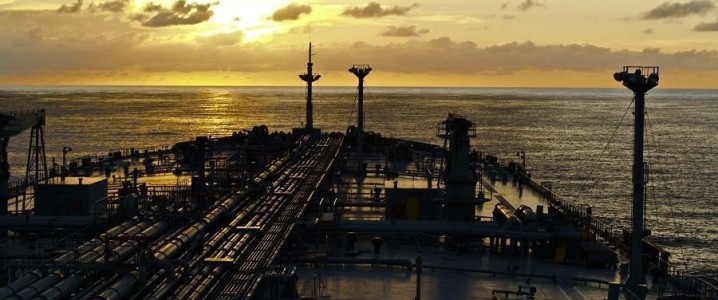Business
Russian Oil Freight Rates to India Decline Amid Sanctions Concerns

Freight rates for Russian Urals crude oil shipped from Baltic ports to India have decreased in July 2023, falling to between $5.0 million and $5.3 million per Aframax shipment. This decline marks a reduction from the range of $5.5 million to $5.7 million observed in June. The drop in costs is attributed to an increase in the availability of tankers, but traders caution that the situation remains precarious.
“The moment of relative calm could be the last breath before freight volatility returns with a vengeance,”
said industry analysts. The current shipping cost reduction reflects a fleeting opportunity for buyers, as Urals crude remains priced below the $60 per barrel price cap. This pricing allows Western tankers and insurance companies to engage in the trade, resulting in lower costs and smoother logistics.
Historically, every time the price of Urals crude dips below the established cap, freight rates tend to ease. In April 2023, rates averaged around $6 million per voyage. Yet, few expect this trend to continue. The European Union (EU) is in the process of finalizing its 18th sanctions package, which may lower the price cap to $45 per barrel. A shift in U.S. policy, particularly a statement from former President Donald Trump, could further complicate matters, potentially limiting the availability of Western tankers and driving rates back up.
As the top buyer of Russian seaborne crude, India is already experiencing challenges. The discount for Urals crude has narrowed to just $1.70 to $2 per barrel below Brent, the tightest margin since the onset of the conflict in Ukraine. This change, coupled with refinery maintenance issues in Russia and established contracts like those between Rosneft and Reliance, means Indian refiners are struggling to secure cargoes for August.
Refiners are now considering alternatives such as UAE Murban or U.S. West Texas Intermediate (WTI) crude. Despite the recent decrease in shipping costs, current freight rates remain significantly above the pre-sanctions average of $4.7 million to $4.9 million. This reality serves as a reminder that even while Russia complies with the price cap, the discounts previously enjoyed are not what they used to be.
With mounting policy pressure and markets in a state of anticipation, the fluctuations in oil freight rates signal a complex and evolving landscape for both Russian oil exporters and Indian importers. The coming weeks will be crucial in determining how these dynamics unfold.
-

 World5 months ago
World5 months agoSBI Announces QIP Floor Price at ₹811.05 Per Share
-

 Lifestyle5 months ago
Lifestyle5 months agoCept Unveils ₹3.1 Crore Urban Mobility Plan for Sustainable Growth
-

 Science4 months ago
Science4 months agoNew Blood Group Discovered in South Indian Woman at Rotary Centre
-

 World5 months ago
World5 months agoTorrential Rains Cause Flash Flooding in New York and New Jersey
-

 Top Stories5 months ago
Top Stories5 months agoKonkani Cultural Organisation to Host Pearl Jubilee in Abu Dhabi
-

 Sports4 months ago
Sports4 months agoBroad Advocates for Bowling Change Ahead of Final Test Against India
-

 Science5 months ago
Science5 months agoNothing Headphone 1 Review: A Bold Contender in Audio Design
-

 Top Stories5 months ago
Top Stories5 months agoAir India Crash Investigation Highlights Boeing Fuel Switch Concerns
-

 Business5 months ago
Business5 months agoIndian Stock Market Rebounds: Sensex and Nifty Rise After Four-Day Decline
-

 Sports4 months ago
Sports4 months agoCristian Totti Retires at 19: Pressure of Fame Takes Toll
-

 Politics5 months ago
Politics5 months agoAbandoned Doberman Finds New Home After Journey to Prague
-

 Top Stories5 months ago
Top Stories5 months agoPatna Bank Manager Abhishek Varun Found Dead in Well









